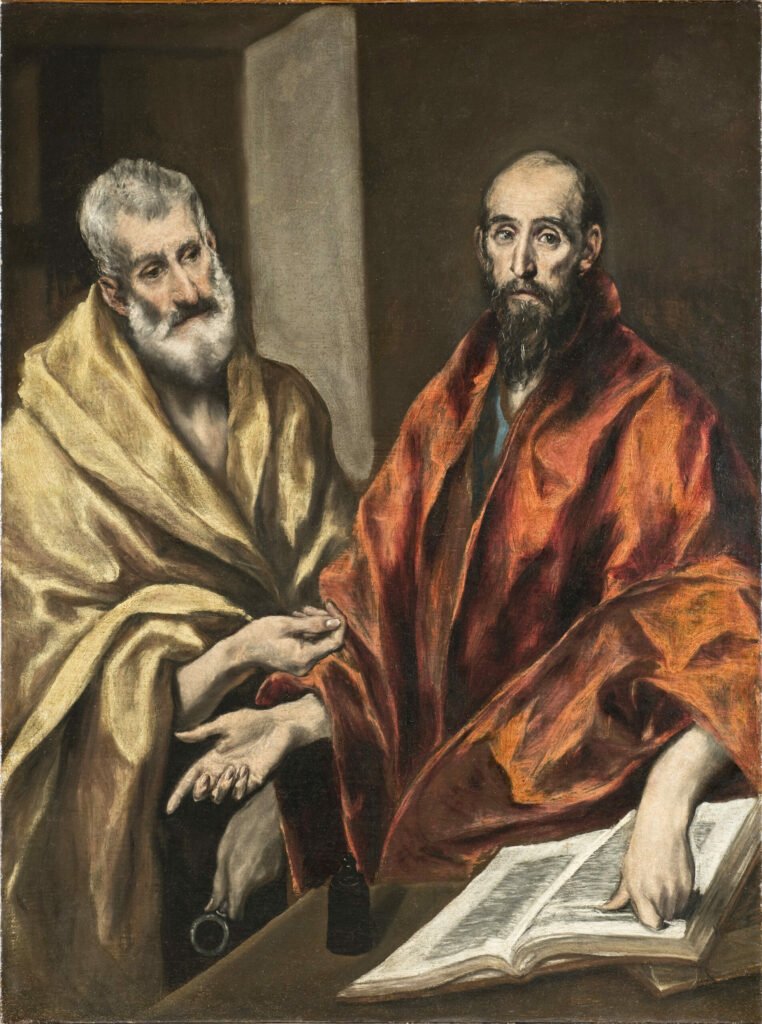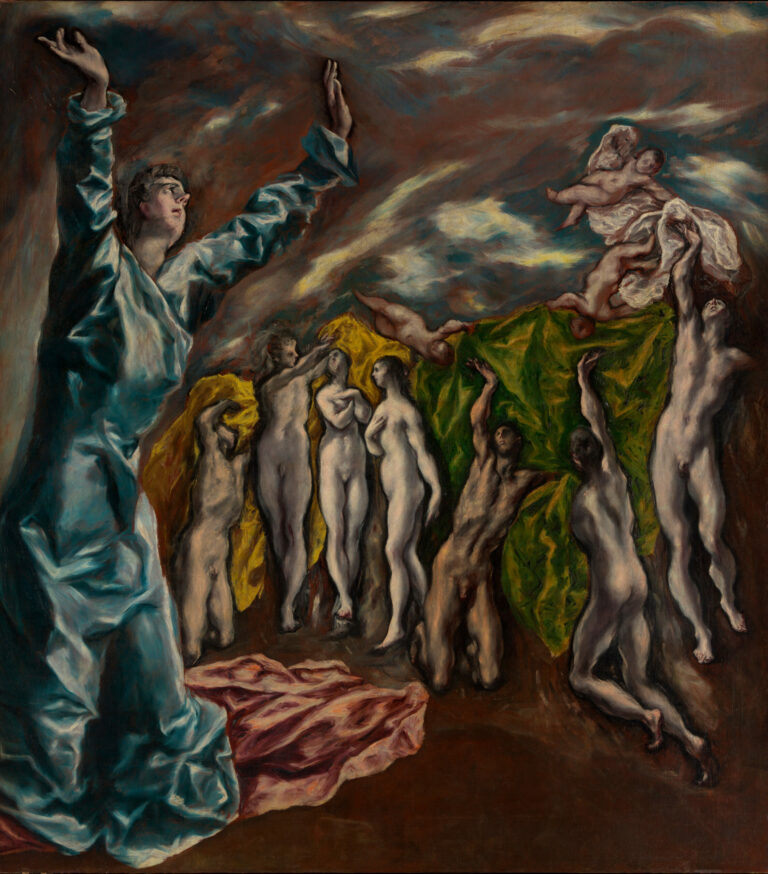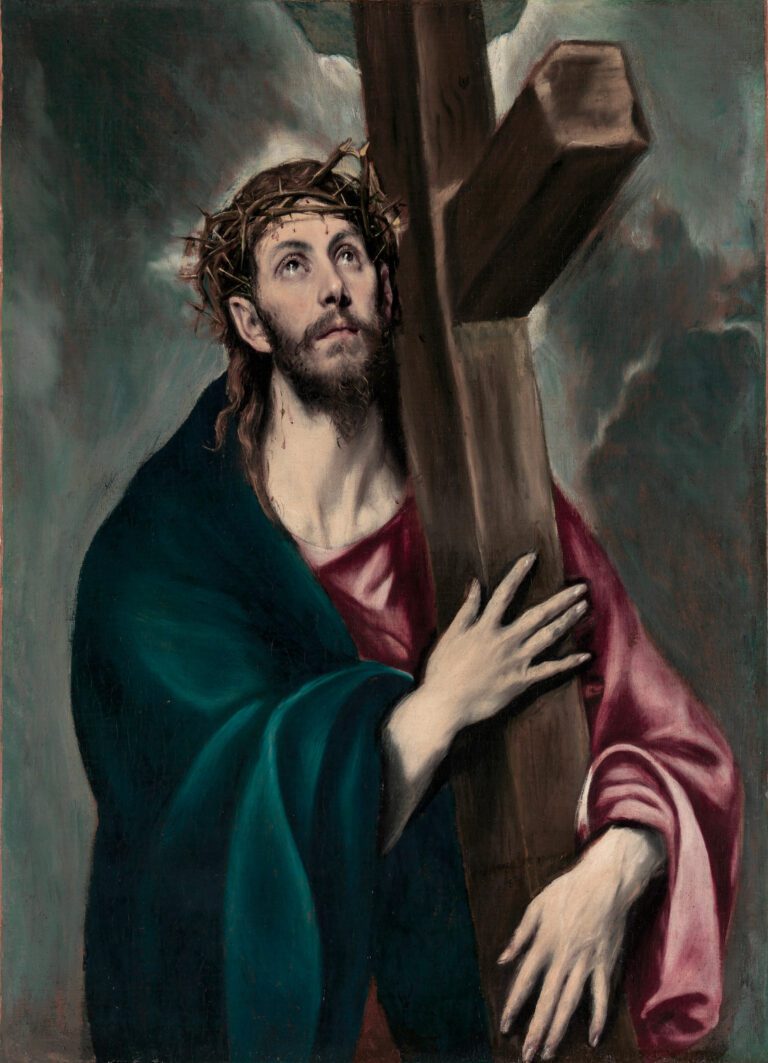
Saint Peter and Saint Paul testifies to El Greco’s mystical art, where spirituality transcends naturalistic representation.
The two pillars of the early Church are captured in a silent dialogue charged with theological tensions. Peter, draped in a golden yellow mantle, embodies the original apostolic tradition. Paul, clothed in a sumptuous red-orange mantle, places his hand on an open book—a direct allusion to the Pauline epistles that founded Christian doctrine.
The characteristic aesthetic of the Cretan master is fully expressed: elongated bodies with anti-naturalistic proportions, emaciated faces with prominent cheekbones, and slender hands of striking expressiveness. The chromatic palette structures the composition while symbolizing their distinct temperaments. This representation has been interpreted as a metaphor for the conflict between Protestant Reformation and Catholic Counter-Reformation, with Paul embodying doctrinal innovation facing Peter, guardian of tradition.
Further information
- El Greco, Saint Peter and Saint Paul, c. 1605-1608, Nationalmuseum, photo Erik Cornelius, Public domain
- oil on canvas, 124 x 93.5 cm
- Nationalmuseum, Stockholm, room 1616, 17th century
- https://collection.nationalmuseum.se/en/collection/item/20131/
Domínikos Theotokópoulos, known as El Greco (1541-1614), remains one of the most singular figures in Western art. Born in Venetian Crete, trained in the Byzantine tradition then under Titian in Venice, he settled permanently in Toledo around 1577. In this mystical city of Castile, he developed a revolutionary style blending Byzantine heritage, Italian Mannerism, and Spanish mystical fervor. Painter of the soul more than the body, El Greco transcends Renaissance canons to create a unique plastic language, anticipating modern Expressionism by three centuries. His bold elongations, acid chromatic ranges, and vertiginous compositions express an ardent spirituality in perfect harmony with the spirit of the Counter-Reformation.


